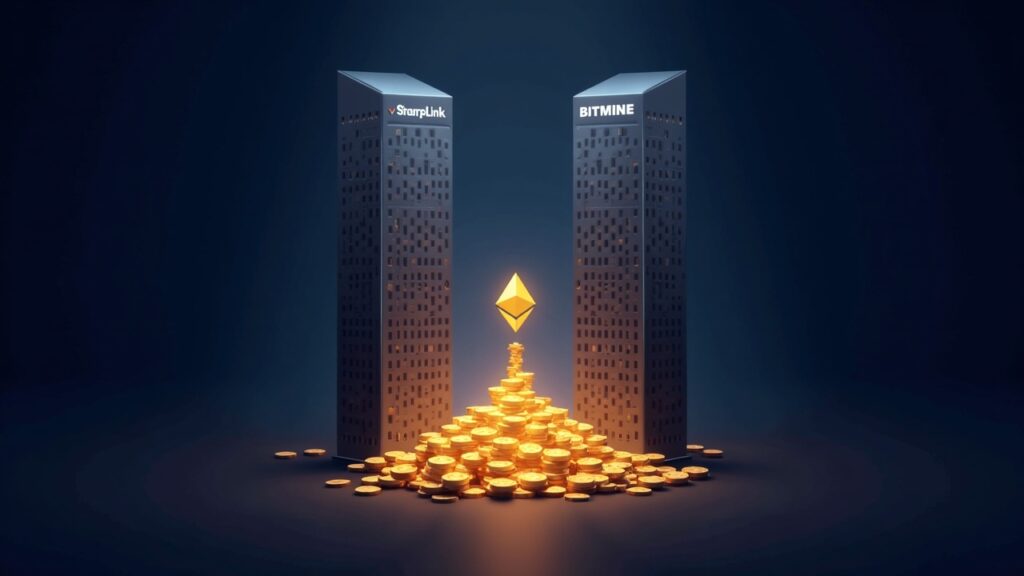SharpLink sold new stock to raise cash and used the proceeds to buy Ethereum, boosting its holdings but hurting the stock price and shaking investor trust due to dilution. BitMine also bought ETH and now holds far more, a gap that affects how each firm handles large trades and guards against loss. Together, these moves spotlight the trade-offs between equity-funded accumulation, liquidity, and staking risk.
SharpLink said in May 2025 that it would focus on Ethereum. It sold new shares in a private deal and collected $425 million, spending the money to start its ETH pile. The first purchase pushed the stock up more than 400%, but later buys and more share sales sent the price back down. After one $463 million ETH purchase, the stock dropped about 66%–70% from its top and the total value of all SharpLink shares fell 65%. On October 1, 2025, the firm held 838,000 ETH, worth about $3.5 billion.
SharpLink stakes part of the pile with Liquid Collective besides Figment to earn rewards and it tests Linea, a Layer-2 network, to cut fees and boost returns. The firm also filed a second sale: $76.5 million of new stock priced 12% above the last close, with the deal expected to settle on October 17, 2025.
SharpLink’s equity-funded ETH strategy
BitMine took a different path. Its stock rose up to 3,000% in July 2025. On October 6, 2025, the firm reported 3,000,000 ETH on its books, worth about $13 billion—more than three times SharpLink’s stash. News stories link analyst Tom Lee to BitMine’s buying plans.
When public firms hoard ETH, several things happen: the coin becomes easier or harder to trade, firms must explain how they guard the asset and each new share sale dilutes prior owners. Staking adds risk—if a validator node fails or a custodian loses funds, part of the stake disappears. Paying for coins with stock keeps debt off the books, yet each new share issue can push the stock price down.
The next event is SharpLink’s second share sale on October 17, 2025. How that sale goes—and whether BitMine keeps buying—will signal whether the corporate-ETH model can last or if falling stock prices force firms to slow the pace.

